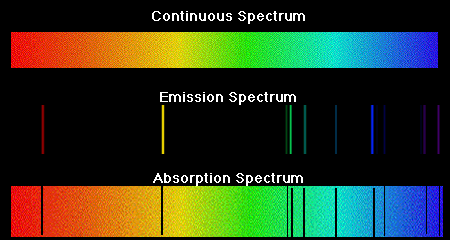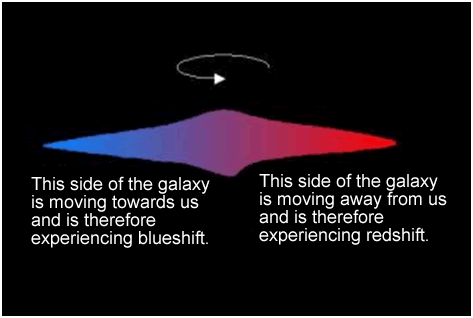Absorption
spectroscopy
An absorption spectrum is made up of a continues spectrum with lines missing. Compare the emission spectrum and the absorption spectrum of helium below. You will notice that the absorption spectrum contains black lines at exactly the same position as the lines in the emission spectrum appear.

The spectrum that originates from stars is usually an absorption spectrum. Just like an emission spectra, absorption spectra can be used to identify elements present in stars.


- calculate the mass of the star;
- infer the existence of dark matter. Astronomers have calculated the velocity of stars from the centre of galaxies and have suggested that there is more matter in the galaxy than is visible. When astronomers do their calculations they find that, by some estimates, 90% of the mass in the universe is missing. Atronomers have therefoire suggested the existence of dark matter.
- show expansion of the Universe. Edwin Hubble observed that more distant galaxies tended to have more redshifted spectra.